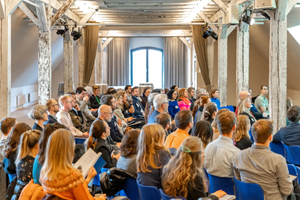The construction sector is responsible for 37% of total global energy-related CO2 emissions, 69% of those emissions come from operating and using existing buildings.
The trend towards sustainable construction is overall positive but the sector still needs to evolve in how it addresses global warming, biodiversity loss and ecosystem collapse and water scarcity.
Improvements will be driven by research and development, adapting cost allocation and practices in the sector and enshrining regulatory changes.
Climate change has unquestionably become the biggest global risk. All of us bear responsibility but this duty is particularly acute for those operating in carbon-heavy sectors like construction, which is responsible for 37% of total global energy-related CO2 emissions.
There is a pressing need for the construction sector to develop sustainable practices to protect our climate and prevent global temperatures from rising more than 1.5 degrees Celsius. This imperative is especially true as global construction is forecast to grow by 42% by 2030.
Sustainable construction for a greener future
- Global warming
The current carbon footprint of the construction sector is significant. However, the largest source of emissions comes from operating and using existing buildings rather than their construction. McKinsey estimates this contributes 69% of total emissions along the construction value chain. It follows that sustainable building design must be a priority.
Improvements are being made – 2020 saw a 13.9% increase in green building certifications, for example. The investment appetite is also there for construction companies willing to build greener. Predictions hold that new sustainable buildings will represent a $24.7 trillion investment opportunity by 2030 just in emerging markets.
The World Economic Forum also launched the Net-Zero Carbon Cities Building Value Framework in January 2022 to support investors and asset owners with decision-making around the investment needed to deliver a greener urban built environment. Therefore, the ground has never been better prepared for construction companies to design buildings and infrastructure that are resilient and energy-efficient, not just cost-efficient.
Another major challenge is the carbon footprint of important building materials such as concrete and steel, responsible for 14–16% of global energy-related CO2 emissions. Construction companies have a crucial role in driving research and development into producing lower-carbon building materials and sharing industry knowledge needed to increase the lifetime of materials through reusing, repairing and recycling.
- Biodiversity loss and ecosystem collapse
Our natural ecosystems have never been so fragile, for which infrastructure development bears a serious responsibility. Around 1 million animal and plant species are threatened with extinction – many within decades and biodiversity loss amounts to a 10% loss of output to the global economy each year.
At the same time, we need to increase the built environment and develop new infrastructure. How can we resolve this apparent contradiction? There are many practices construction companies can implement and accelerate to reduce their impact. These include the creation of new habitats, buffer areas and landscapes, which help prevent biodiversity loss in the areas they operate. However, it will take major investment.
According to the UN’s latest State of Finance for Nature report, the world needs $8.1 trillion in investment in nature by 2050 to tackle our planetary crisis. Part of this investment will need to come from the construction sector to ensure their activities support, not damage, the natural world, including within our urban environments.
It’s predicted that 68% of the world’s population, nearly 7 billion people, will be living in cities by 2050. Harnessing our cities’ natural ecosystems and supporting ambitious designs that embed nature in new or upgraded infrastructure are some of the ways to ensure our cities become greener. The construction sector has no choice but to support an urban development model in harmony with biodiversity.
- Water scarcity
The gap between global water supply and demand is projected to reach 40% by 2030. Acute water shortages, especially in the developing world, risk conflict and food crisis. Water is an important raw material in construction and the sector must ensure efficiency in its water usage.
More crucially, the sector can be a part of the solution for water scarcity by developing new water infrastructure. A rapid increase in the production of large-scale water storage and recycling systems, flood control structures, desalination plants and improved sewage systems could make the most of our dwindling water resources, which is a monumental challenge. Additional investment needed for developing water infrastructure is thought to be around $6.7 trillion by 2030 and $22.6 trillion by 2050.
By working with investors and policymakers, the construction sector can help accelerate these necessary developments and help protect the water supplies of the world’s most vulnerable communities.
Towards a sustainable construction industry
Real and lasting change requires honesty, commitment, and leadership from the construction industry. We must massively invest in research and development. We must be ready to question our margins and practices today if it helps to protect our future. We must also embrace regulatory changes to ensure that protecting the planet applies to all and not just to environmental trailblazers.
For too long, many in the construction industry have not taken the environmental impact seriously. Still, there are enormous opportunities for the sector to drive positive change. We must act now to make the most of these opportunities. Planet earth will not wait.













